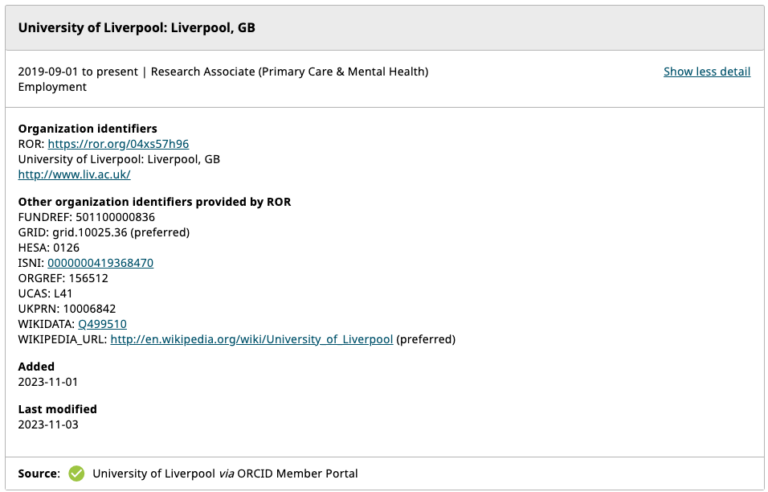Understanding Website Traffic Metrics
Defining Key Traffic Metrics – Visits, Unique Visitors, Page Views, Bounce Rate, Session Duration
Understanding website traffic metrics is akin to reading the entrails of a fortune-teller—your insights reveal whether your digital ambitions are flourishing or floundering. The question of how much website traffic is good remains a perennial puzzle; it varies wildly across industries, audiences, and even the phase of your digital journey.
At the core, key traffic metrics such as visits, unique visitors, page views, bounce rate, and session duration serve as the compass guiding your SEO odyssey. Visits count every time someone lands on your site, but it’s the unique visitors—those individual souls—who truly measure your reach. Page views, on the other hand, reflect engagement, revealing how compelling your content is to those who venture further. Meanwhile, bounce rate indicates how many visitors leave after viewing only one page, a silent protest of your site’s relevance.
For clarity, here’s a quick glance at what to watch:
- Visits
- Unique Visitors
- Page Views
- Bounce Rate
- Session Duration
When pondering how much website traffic is good, remember: quality often trumps quantity. A modest, engaged audience can outperform a flood of disinterested passers-by—yet, understanding these metrics helps calibrate expectations and measure growth with a keen eye.
The Role of Traffic in SEO – How Traffic Impacts Search Engine Rankings
Understanding website traffic metrics is crucial in grasping how your digital presence influences search engine rankings. Traffic acts as a key indicator of your site’s relevance and authority in the eyes of search engines like Google. When more visitors engage with your content, it signals that your site offers value, which can positively impact your ranking positions.
But how much website traffic is good? That depends. Search engines tend to favour websites that demonstrate consistent, high-quality engagement rather than sheer volume. A spike in traffic, for instance, might boost your rankings temporarily, but sustained growth and visitor loyalty are what truly matter.
Traffic patterns can also reveal whether your SEO efforts are paying off. For example, increased page views and longer session durations often correlate with higher search engine visibility. Conversely, a high bounce rate might indicate your content isn’t meeting visitors’ expectations—an immediate red flag for your SEO strategy.
Different Types of Website Traffic – Organic, Paid, Referral, Direct, Social
Understanding website traffic metrics is akin to decoding the heartbeat of your digital presence. Each visitor embodies a moment of curiosity, engagement, or trust—elements that shape your SEO landscape. Different types of website traffic—organic, paid, referral, direct, and social—each tell a unique story about how users discover and interact with your site.
Organic traffic, driven by search engines, often signifies authentic relevance and is highly valued in SEO circles. Paid traffic, on the other hand, offers quick visibility but requires strategic investment to sustain. Referral traffic, arriving via backlinks from other websites, boosts your authority and broadens your reach. Social traffic reflects your content’s resonance on platforms where conversations flourish.
Monitoring these diverse traffic sources reveals whether your SEO efforts are effective or need recalibration. After all, understanding how much website traffic is good hinges on recognising quality over quantity—it’s about meaningful engagement that fosters long-term growth.
What Constitutes Good Website Traffic?
Industry Benchmarks and Averages – Average Traffic for Small, Medium, and Large Websites
Understanding what constitutes good website traffic can seem like navigating a maze. Surprisingly, industry benchmarks reveal that small websites often see around 1,000 to 5,000 visits per month, while medium-sized sites might attract 20,000 to 50,000 visitors. Large, well-established websites can command hundreds of thousands or even millions of visits. But the real question remains—how much website traffic is good?
It depends on your goals and industry standards. For many, hitting a steady increase in traffic signals healthy growth, especially if accompanied by high engagement levels. Rather than fixating solely on raw numbers, it’s helpful to compare your website’s traffic with those of similar businesses.
- Small websites: 1,000 – 5,000 visits/month
- Medium websites: 20,000 – 50,000 visits/month
- Large websites: 100,000+ visits/month
Ultimately, good website traffic is about quality, relevance, and consistent growth—because numbers alone don’t tell the full story.
Traffic Growth Trends – Steady Growth vs. Rapid Spikes
Understanding what constitutes good website traffic can be tricky, especially with so many variables at play. A key point is that steady traffic growth often surpasses sudden spikes, which can sometimes be a sign of unnatural boosts or short-term campaigns. Consistent increase shows your audience genuinely values your content or products, making it a stronger indicator of long-term success.
When evaluating how much website traffic is good, look for trends rather than isolated numbers. If your traffic is gradually rising month over month, that’s a positive sign of organic growth. Conversely, large spikes in traffic can distort your metrics and don’t always translate to meaningful engagement. Remember, quality and relevance matter more than sheer volume. For many websites, a steady, incremental growth pattern is the clearest indicator of sustainable success.
- Track your growth over several months to identify genuine upward trends.
- Compare your traffic with industry benchmarks to gauge relative performance.
- Focus on engagement metrics alongside raw traffic figures to assess quality.
Ultimately, the question of how much website traffic is good depends on your goals and niche. But consistent growth and meaningful engagement are the real markers of success in the complex landscape of SEO and online presence.
Quality vs. Quantity of Traffic – Engaged Visitors and Conversion Rates
In the vast ocean of digital presence, sheer volume can sometimes drown out the true melody of success. When pondering how much website traffic is good, it’s vital to recognise that quality often outshines quantity. Engaged visitors—those who linger, explore, and interact—are the heartbeat of a thriving platform. They turn fleeting visits into enduring connections, a testament to content that resonates and meets genuine needs.
While high raw numbers may dazzle, it’s the *conversion rate* that truly reveals the worth of your traffic. A modest stream of dedicated visitors can outperform a flood of passive browsers. Think of it as a garden—flourishing not just because of abundant rain, but because of healthy roots and attentive cultivation. To gauge this harmony, consider these key markers:
- Visitor engagement metrics such as session duration and pages per session.
- Repeat visits, signalling loyalty and ongoing interest.
- Conversion rates that turn visitors into customers or subscribers.
Ultimately, the question of how much website traffic is good hinges on the dance between volume and relevance. The true triumph lies in attracting visitors who not only arrive but stay, engage, and transform—those who make your digital domain a lively, meaningful space rather than just a fleeting shadow in the web’s vast expanse.
Factors Influencing What Is Considered Good Traffic
Business Goals and Objectives – Brand Awareness, Lead Generation, E-commerce Sales
When it comes to understanding how much website traffic is good, it’s not just about the numbers—it’s about what those visitors do once they arrive. Business goals and objectives shape what counts as a successful traffic volume. For instance, if your aim is brand awareness, then high traffic numbers might be less critical than engagement metrics like time on site or social shares. Conversely, if lead generation or e-commerce sales are your primary focus, then quality and conversion rates matter more than sheer volume.
In essence, the optimal amount of website traffic hinges on your specific ambitions. Are you looking to build a loyal community or drive immediate sales? The answer influences whether you should aim for steady growth or spike-driven traffic surges. After all, understanding how much website traffic is good is less about hitting a magic number and more about aligning traffic levels with your core objectives.
Target Audience and Niche – Niche Markets and Niche-Specific Benchmarks
In the labyrinth of digital pursuit, the question lingers—how much website traffic is good? The answer is not etched in stone but rather sculpted by the unique contours of your audience and niche. Traffic, like a river, must flow with purpose; a torrent may drown your efforts, while a trickle could reflect missed opportunities. For specialised markets, niche-specific benchmarks serve as guiding stars, illuminating the path to optimal engagement. These benchmarks aren’t mere numbers, but a reflection of industry standards that help you gauge whether your site is riding the crest or languishing in the trough.
Understanding your target audience—the constellation of behaviours, preferences, and expectations—can transform raw visitors into loyal patrons. A niche market demands tailored metrics; what’s considered impressive for a boutique artisan shop might differ vastly from a B2B enterprise. Recognising these subtle distinctions allows you to refine your expectations and interpret your website traffic with clarity, ensuring your digital efforts resonate with the right ears. After all, in the symphony of SEO, quality and relevance are the melodies that turn mere visitors into meaningful conversions.

Geographical Location – Local vs. Global Traffic Dynamics
In the grand theatre of digital commerce, the question of “how much website traffic is good” often resembles a game of political discourse—entirely dependent on context and audience. Geographical location plays a pivotal role in shaping these expectations. After all, a bustling local bakery’s ideal traffic looks remarkably different from a global SaaS enterprise. Local traffic can swiftly translate into footfall and immediate conversions, while global visitors demand a more nuanced approach to engagement and localisation.
Understanding the dynamics between local and global traffic is essential. Here are some factors to consider:
- Regional search behaviour and language preferences.
- Time zone differences affecting user engagement.
- Market saturation and regional competition.
For websites targeting a specific geographic area, the metrics for “good” traffic are often measured by local intent and community involvement. Conversely, global sites gauge success through international reach and scalability. Recognising these subtle distinctions allows digital strategists to refine their expectations and craft content that resonates across borders. Ultimately, whether it’s a neighbourhood boutique or a multinational powerhouse, the real question remains—how much website traffic is good? The answer, of course, hinges on your specific aims and the nuanced dance of your audience’s geographical footprint.
Setting Realistic Traffic Goals
Analyzing Historical Data – Baseline and Growth Expectations
Setting realistic traffic goals is akin to charting a course through uncharted waters; without a compass, even the bravest sailors risk wandering into storms. To determine how much website traffic is good, one must first analyse historical data, establishing a reliable baseline. This foundation reveals your current reach and the pace of growth over time, providing invaluable context for future ambitions.
By examining past performance, you can discern whether your traffic is steadily ascending or experiencing fleeting spikes. This insight allows for the calibration of expectations—whether aiming for incremental growth or aiming to ignite rapid surges. For instance, small websites might find a 10% monthly increase a beacon of success, while larger platforms may seek more substantial gains. Ultimately, understanding your baseline helps set tailored, achievable targets, ensuring your efforts are both sustainable and strategically aligned.
Competitive Analysis – Benchmark Against Similar Websites
In the vast digital ocean, knowing how much website traffic is good is akin to understanding the gentle ripples versus the raging storms. To set your sights on a realistic destination, it’s essential to benchmark against similar websites—those celestial bodies in your niche that illuminate the path. Competitive analysis acts as a compass, revealing where your current traffic stands relative to industry standards. For instance, a niche blog might see 1,000 visits a day, while an e-commerce giant could attract tenfold or more. Recognising these patterns helps you craft achievable growth targets, avoiding the peril of overambition or complacency.
By carefully observing industry benchmarks and averages, you can discern whether your traffic is blossoming steadily or experiencing fleeting surges. This understanding guides your strategy, ensuring your efforts harmonise with what’s typical in your domain. Remember, the question of how much website traffic is good isn’t solely about numbers—it’s about the quality of engagement and the stories those visitors bring. Aligning your goals with competitive insights transforms abstract ambitions into a tangible, enchanting journey through the digital cosmos.
Using SMART Goals for Traffic Growth – Specific, Measurable, Achievable, Relevant, Time-bound
Understanding how much website traffic is good often feels like deciphering a celestial map — full of constellations and hidden pathways. Setting realistic traffic goals is the secret to turning those distant stars into guiding lights. When crafting these objectives, adopting the SMART framework ensures your ambitions are not only lofty but also within reach.
Goals should be specific, such as increasing organic traffic by 20% over six months, and measurable through clear analytics. Achievable targets are rooted in industry benchmarks and your current baseline, preventing the trap of overambition. Relevance is key—aligning your traffic growth with your broader business objectives like enhancing brand awareness or boosting e-commerce sales transforms abstract numbers into meaningful milestones.
- Set a clear timeframe that energises your team, creating a sense of urgency and focus.
By weaving these elements together, you’ll discover that understanding how much website traffic is good is less about chasing arbitrary figures and more about cultivating a consistent, engaged audience. When goals are rooted in realistic expectations and strategic relevance, the question shifts from “how much” to “how well” — a vital distinction in the pursuit of digital excellence. Such clarity fuels your journey through the vast digital cosmos, transforming dreams into tangible growth.
Optimizing for Higher Website Traffic
Content Strategies – Creating Valuable, Relevant Content
Understanding how much website traffic is good can be a game-changer in shaping your online strategy. A website with steady growth and high engagement often signals that your content resonates with your target audience. But beyond the raw numbers, it’s about the quality of traffic—are visitors staying longer, exploring multiple pages, and converting? These nuances reveal the true health of your site’s performance. When optimising for higher website traffic content strategies, creating valuable, relevant content becomes paramount. It’s not just about attracting visitors but ensuring they find what they need and stay engaged.
To enhance your reach, consider implementing a mix of content formats—blog posts, videos, infographics—that speak directly to your audience’s interests. Tracking how much website traffic is good involves examining your industry benchmarks and comparing your growth trends. Remember, consistent, targeted efforts often outperform sudden spikes—building a loyal visitor base takes patience and precision. Ultimately, knowing how much website traffic is good hinges on your specific goals—whether increasing brand awareness, driving e-commerce sales, or generating leads. The right content strategy will align seamlessly with these objectives, fostering sustainable growth and meaningful engagement.
SEO Best Practices – On-page, Off-page, Technical SEO
In the vast digital landscape, understanding how much website traffic is good can feel like trying to catch a whisper in a storm. Yet, refining your SEO practices can turn that whisper into a compelling chorus. Optimising for higher website traffic involves a harmonious blend of on-page, off-page, and technical SEO. Ensuring your content is discoverable, fast-loading, and mobile-friendly sets the stage for increased visits. But it’s not just about numbers—it’s about attracting the right visitors who are genuinely interested in your niche.

Incorporating a strategic approach, such as focusing on keyword-rich content and enhancing site structure, can foster a natural flow of traffic. For example, implementing an ordered list like:
- Enhance your website’s load speed.
- Build authoritative backlinks through off-page SEO.
- Address technical issues like broken links and duplicate content.
These elements work together to elevate your site’s visibility and engagement. Remember, the goal isn’t merely high traffic but sustainable growth—so keep an eye on how much website traffic is good within your industry benchmarks. By aligning your optimisation efforts with your business objectives, you cultivate a digital environment where traffic doesn’t just pass through but stays, explores, and converts in meaningful ways.
Leveraging Social Media and Campaigns – Promotion and Outreach Tactics
Harnessing the power of social media and campaigns can transform a steady trickle of visitors into a vibrant stream of engaged traffic. When executed with precision, promotion and outreach tactics can elevate your website’s visibility and attract the right audience. Social platforms like LinkedIn, Instagram, and Twitter act as virtual marketplaces, where sharing compelling content can spark curiosity and drive traffic. But the real magic lies in targeted campaigns that resonate with your niche audience, turning casual visitors into loyal followers.
To optimise your efforts, consider integrating an ordered approach:
- Craft shareable, keyword-rich content tailored for your social channels.
- Leverage influencer collaborations to amplify your message.
- Utilise paid advertising to reach specific demographics.
By expanding your outreach beyond organic reach, you can accelerate your website traffic growth, answering the question of how much website traffic is good with tangible, measurable results. When your campaigns align seamlessly with your brand narrative, they create an inviting digital environment where visitors don’t just pass through—they stay, explore, and become part of your story. This strategic blend of promotion and outreach ultimately cultivates sustainable growth, ensuring your traffic is not only high but meaningful.
Monitoring and Analyzing Traffic Performance
Using Analytics Tools – Google Analytics, Search Console
Monitoring and analysing traffic performance with sophisticated analytics tools like Google Analytics and Search Console reveals patterns that often elude superficial observation. These platforms serve as digital microscopes, exposing the nuanced behaviour of visitors and illuminating the pathways through which they engage with your content. By scrutinising metrics such as user flow, conversion rates, and real-time traffic, one can discern whether the influx of visitors aligns with your underlying business objectives.
Understanding how much website traffic is good hinges on recognising the quality of this traffic, not merely its volume. For instance, a spike in visitors might seem promising but could be misleading if engagement metrics decline. Conversely, steady growth in specific segments—like organic or referral traffic—may signal a robust, targeted reach. Employing these tools allows marketers to refine their strategies continually, ensuring that each visitor is more than just a number—it’s a potential conversion, a step closer to realising the true value of your digital footprint.
Interpreting Traffic Data – Identifying Trends and Opportunities
Interpreting traffic data is akin to reading the pulse of your digital ecosystem. When you delve into analytics, subtle shifts and patterns emerge—revealing opportunities that might otherwise remain hidden beneath surface-level metrics. Recognising trends, such as consistent growth in organic traffic or a spike in referral visitors, can illuminate the pathways of engagement that truly matter. These insights help you understand how much website traffic is good, especially when aligned with your specific business goals.
It’s not merely about the volume but the quality and behaviour of visitors that define success. For example, a surge in traffic accompanied by a decline in session duration or an increase in bounce rate signals a mismatch—perhaps attracting the wrong audience or misaligned content. Conversely, steady growth in targeted segments often indicates your strategies are resonating. By continuously monitoring and analysing traffic performance, you uncover new avenues for optimisation, ensuring each visitor contributes meaningfully to your digital ambitions.
Adjusting Strategies Based on Data – Continuous Improvement for SEO and Traffic
Monitoring and analysing traffic performance isn’t just about tracking numbers; it’s about understanding the story behind the data. When you interpret how visitors interact with your site, you uncover insights that can transform your SEO strategy. Recognising patterns—such as increasing organic traffic or improving engagement metrics—helps you pinpoint what’s working and where adjustments are needed.
Adjusting strategies based on real data fosters a cycle of continuous improvement. For instance, if a spike in referral traffic correlates with a new content campaign, you can amplify similar efforts. Conversely, if certain channels underperform, reallocating resources or refining messaging may be necessary.
- Refine keyword targeting
- Optimise content relevance
- Enhance user experience
These steps ensure each visitor is not just a fleeting click but a meaningful participant in your digital journey.



0 Comments